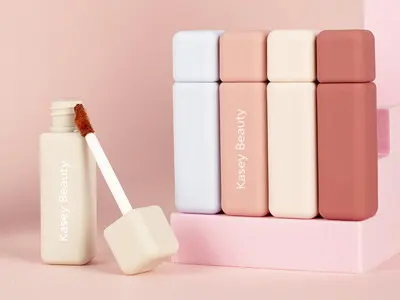In today’s competitive beauty industry, establishing your own lip plumper private label can be a lucrative venture. The rising demand for fuller, luscious lips has created an expansive market, providing entrepreneurs with the opportunity to create unique, high-quality products that can capture consumer attention. This comprehensive guide will take you through the essential steps to successfully create your own lip plumper private label, ensuring you deliver a product that stands out in the crowded marketplace.
Understanding the Lip Plumper Market
Before diving into the creation process, it is crucial to have a thorough understanding of the lip plumper market. This involves analyzing current trends, consumer preferences, and key players in the industry. The beauty market is dynamic, with trends constantly evolving, so staying updated is imperative. Consumers are increasingly leaning towards products that offer natural ingredients, long-lasting effects, and minimal side effects.
Market Research and Analysis
Conducting detailed market research will help you identify gaps in the market and potential areas for innovation. This involves:
- Analyzing competitors: Look at the leading brands in the market. Study their product range, marketing strategies, and customer reviews.
- Understanding consumer needs: Engage with potential customers through surveys and focus groups to understand their preferences and pain points.
- Identifying trends: Stay abreast of the latest beauty trends through industry reports, beauty blogs, and social media platforms.
Developing Your Lip Plumper Formula
Creating a unique and effective lip plumper formula is the cornerstone of your private label. The formula should not only provide the desired plumping effect but also nourish and protect the lips.
Choosing the Right Ingredients
The effectiveness of a lip plumper largely depends on its ingredients. Some common ingredients used in lip plumpers include:
- Hyaluronic Acid: Known for its hydrating properties, it helps in providing a plumping effect by attracting moisture.
- Peptides: These help stimulate collagen production, leading to fuller lips over time.
- Menthol and Capsaicin: These ingredients create a tingling sensation that temporarily swells the lips.
- Botanical Extracts: Ingredients like cinnamon oil, ginger root extract, and peppermint oil can enhance the plumping effect naturally.
Formulation and Testing
Once you have chosen your ingredients, the next step is formulating and testing the product. This involves:
- Working with a chemist: Collaborate with a cosmetic chemist to develop a stable and effective formula.
- Conducting stability tests: Ensure the formula remains effective and safe over time.
- Performing clinical trials: Test the product on a sample group to assess its efficacy and safety.
Designing Your Brand and Packaging
Your brand identity and packaging play a significant role in attracting and retaining customers. A strong brand differentiates your product in a saturated market.
Brand Identity
Create a brand identity that resonates with your target audience. This includes:
- Brand Name and Logo: Choose a catchy and memorable name. Design a logo that reflects your brand’s essence.
- Brand Story: Craft a compelling story that connects emotionally with your audience. Highlight your brand values and mission.
Packaging Design
Packaging is the first physical touchpoint with your customer, so it must be appealing and functional.
- Design Aesthetics: Ensure the design is visually appealing and aligns with your brand identity.
- Functionality: The packaging should be easy to use and protect the product effectively.
- Sustainability: Consider using eco-friendly materials to appeal to environmentally conscious consumers.
Navigating Manufacturing and Production
Choosing the right manufacturing partner is critical to ensuring the quality and consistency of your lip plumper.
Selecting a Manufacturer
When selecting a manufacturer, consider the following:
- Experience and Expertise: Ensure the manufacturer has experience in producing lip care products.
- Quality Assurance: The manufacturer should adhere to Good Manufacturing Practices (GMP) and have robust quality control processes.
- Capacity and Scalability: Ensure the manufacturer can meet your current demand and scale up production as needed.
Production Process
Work closely with your manufacturer throughout the production process:
- Pilot Production: Start with a small batch to test the production process and product quality.
- Full-Scale Production: Once satisfied with the pilot batch, move to full-scale production while maintaining strict quality control.
Marketing and Launch Strategy
A well-planned marketing and launch strategy is crucial for the success of your lip plumper. This involves creating buzz and driving sales from day one.
Pre-Launch Marketing
Build anticipation before the official launch through:
- Social Media Teasers: Share sneak peeks and behind-the-scenes content on social media.
- Influencer Partnerships: Collaborate with beauty influencers to reach a broader audience.
- Email Campaigns: Send out newsletters to your subscriber list with exclusive launch information.
Launch Day Strategy
On the launch day, ensure maximum visibility and engagement:
- Live Events: Host live events or webinars to introduce your product.
- Special Offers: Offer limited-time discounts or bundles to encourage purchases.
- Press Releases: Distribute press releases to beauty magazines and websites.
Post-Launch Marketing
Sustain momentum post-launch with ongoing marketing efforts:
- Customer Reviews and Testimonials: Encourage satisfied customers to leave reviews.
- Social Media Engagement: Continuously engage with your audience on social media.
- Content Marketing: Create valuable content such as blog posts and videos to educate and attract potential customers.
Ensuring Regulatory Compliance
Complying with regulatory standards is crucial to avoid legal issues and ensure customer safety.
Regulations and Certifications
Understand the regulatory requirements for cosmetic products in your target market:
- FDA Regulations: In the US, ensure compliance with FDA guidelines for cosmetics.
- EU Cosmetic Regulations: For the European market, adhere to the EU Cosmetics Regulation (EC) No 1223/2009.
- Certifications: Obtain relevant certifications such as Cruelty-Free, Vegan, or Organic if applicable.
Labeling and Claims
Ensure your product labels and marketing claims are accurate and compliant:
- Ingredient Listing: List all ingredients in descending order of concentration.
- Claims Substantiation: Ensure all marketing claims are backed by scientific evidence.
Conclusion
Creating your own lip plumper private label requires a blend of innovation, strategic planning, and diligent execution. By understanding the market, developing a unique formula, building a strong brand, and implementing effective marketing strategies, you can establish a successful product that resonates with consumers and stands out in the competitive beauty industry.



